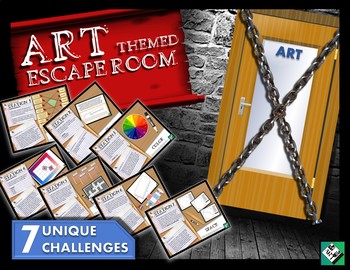Art Escape Room: Elements of Art!
- PPTX
What educators are saying
Description
Art Escape Room: Elements of Art!
This resource provides an engaging and exciting way to test your students understanding of the elements of design. Students engage in a series of 7 hands-on art themed challenges, each based on a specific elements using an “escape room” style format.
Lesson includes:
- Lesson plan/description
- Materials list
- Answer key for each station
- Station set-up diagram
- Printable resources
- Linked electronic resources
- Google quiz/form for students
Your student will love solving the challenges and competing with their classmates in this dramatic and fun learning experience!Be the first to here about our new resources, SALES, and giveaways! Sign up for our e-update.
Be the first to here about our new resources, SALES, and giveaways! Sign up for our e-update.





